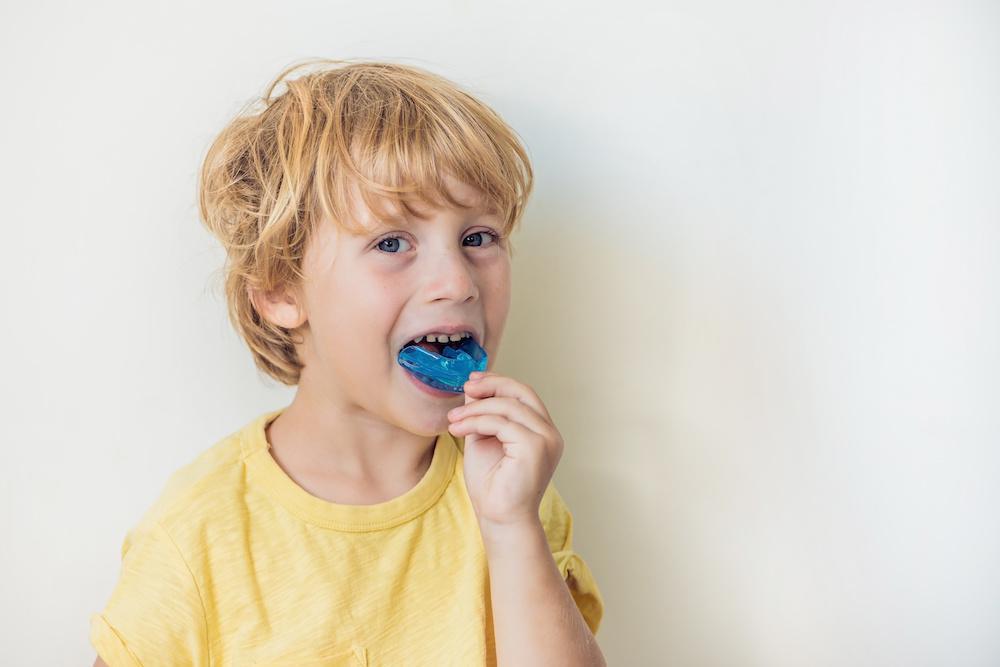At any level of play, wearing the right sports equipment can help improve performance and prevent serious injury. While most children wouldn’t question wearing a helmet to protect their heads, many young athletes don’t realize the risk of oral injury when playing without a mouthguard.
A mouthguard is a small but mighty oral appliance that fits over your child’s teeth to protect their mouth from injury. This flexible plastic appliance acts as a buffer against incidents of impact that can result in missing or broken teeth, lip and tongue lacerations, and jaw injuries.
This oral device is so effective that athletes are 60 times more likely to experience tooth injuries when they don’t use a mouthguard, according to the American Dental Association (ADA). These devices may also help reduce the number and impact of concussions that occur during sports.
In this blog, orthodontist Emanuel Mizrahi, DDS, of Forest Hills Orthodontic Associates in Forest Hills, New York, discusses the circumstances that determine whether your child could benefit from a mouthguard and what’s involved in using one.
How a mouthguard works
A mouthguard is a flexible plastic appliance that completely covers the top arch of your child’s teeth. If your child wears braces or another type of fixed dental appliance, they can also wear a mouthguard on their bottom teeth.
The device works as a protective layer between your child’s mouth and the point of impact, which can occur directly to the mouth, directly to the jaw, or under the chin. A mouthguard absorbs the impact and distributes the force evenly to the rest of your child’s mouth, so they’re less likely to experience cuts, jaw injuries, and tooth fractures.
Children who need a mouthguard
Athletes of any age who participate in contact sports are vulnerable to experiencing facial injuries that can cause damage to their teeth and gums from impact. Contact sports are those activities that involve direct physical contact between players.
Children who play sports, including football, boxing, lacrosse, and ice hockey, can benefit most from wearing a mouthguard. According to the ADA, athletes in noncontact sports, such as basketball, baseball, gymnastics, soccer, and skateboarding, can also experience oral injuries that are preventable with a mouthguard.
If your child could benefit from wearing a mouthguard, they must wear the device at every practice and game, since injuries can happen whenever they’re active in their sport.
Types of mouthguards
When choosing a mouthguard for your child, you’ll want one that fits well and allows normal speech and unrestricted breathing. There are three basic types, and they differ based on customization.
Stock mouthguards
Stock mouthguards can be purchased off the shelf and used immediately. While convenient, these devices don’t offer any type of customization and can make breathing difficult because of their clumsy fit.
Boil-and-bite mouthguards
Boil-and-bite mouthguards provide some level of customization, though you must do it yourself. These devices are made of a flexible, thermoplastic material that becomes soft when placed in boiling water.
After boiling the mouthguard in water, your child bites down on it to mold it to their teeth. While customization can make wearing them more comfortable, the thinner material used in these devices may not provide optimal protection from impact.
Custom-fitted mouthguards
Your child can get the best protection from a custom-fitted mouthguard made to meet your child’s unique mouth and tooth structure. This type of device is fitted in our office to ensure it sits snugly without your child having to bite down or clench their teeth to hold it in place. The personalization may help reduce any resistance your child could have to wearing a mouthguard.
A custom-fitted mouthguard can be personalized to accommodate virtually any type of mouth. It can also be made to accommodate braces and unique oral characteristics, such as a cleft palate, protruding jaw, or receding chin.
Caring for a mouthguard
Your child will get the best results from a mouthguard when the device is maintained properly. A mouthguard is made from durable material that is meant to last for up to several years. However, circumstances, such as the development of your child’s teeth and how well the device is cared for, can affect the length of time your child’s device lasts.
To keep the mouthguard in good condition, it’s important to follow these procedures:
- Encourage your child to avoid chewing on the mouthguard
- After each wear, clean the mouthguard with toothpaste and a toothbrush
- Store the mouthguard in its protective case
- Keep the mouthguard away from the heat and sun to keep the device from melting
- Replace the mouthguard if your child’s mouth changes, if they add or remove orthodontic appliances, or if the device has too much wear and tear
To find out more about mouthguards and whether your child can benefit from wearing one, call 347-384-9199 to book an appointment with Forest Hills Orthodontic Associates today.
